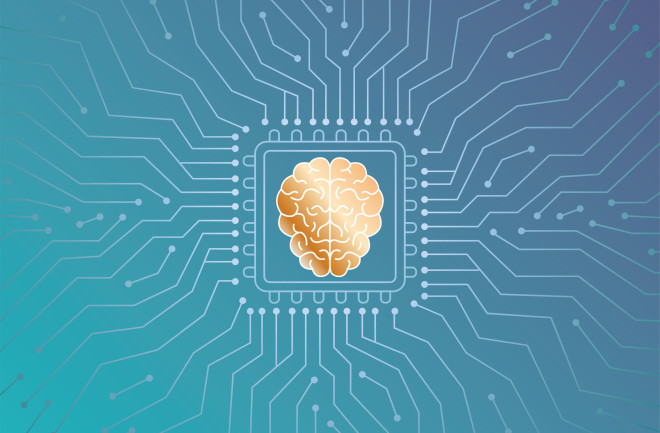The brain is one of the most complex structures ever to exist. But, what if brains could be made better? What if they could be faster, able to solve more complex problems, and linked directly to the vast network of information we have available via the Internet?
That's the lofty aim of the team at Neuralink. Elon Musk, who founded the firm in 2016, said the company's ultimate goal is to achieve a state of “symbiosis” with artificial intelligence.
Neuralink still has a long way to go to meet those ambitions. In 2023, the company announced plans to conscript humans into its first-ever research trial to gauge both the benefits and potential health risks of their premier product: a chip implanted directly into the brain.
In January 2024, the chip was inserted into its first patient. On X, formerly known as Twitter, Musk proudly proclaimed the pioneering client was “recovering well” but offered few other details. (The claim itself was not independently verified, as noted by a statement from the Physicians Committee for Responsible Medicine.)
More recently, in March, Neuralink posted a live stream showing 29-year-old implant recipient Norland Arbaugh using the technology to play a digital version of chess and express how the device has transformed his life after a spinal injury.
How Does Elon Musk's Brain Chip Work?
Neuralink's brain-computer interface might still be far off from its goal of uplifting human cognition into the future, but its current ambitions lie in clinical settings, namely for treating neurological conditions like paralysis.
Read More: Brain-Computer Interface Turns Thoughts to Text
Specifically, Musk hopes to harness the implants to bypass sections of damaged spine by "shunting" signals directly from the motor cortex to other parts of the body, thereby restoring lost mobility to paralysis patients. Neuralink has also suggested using implants to stimulate brain regions to enable blind patients to see with the aid of cameras — and Musk claims that the tech can already restore sight in monkeys.
The device itself is a tiny chip, barely the size of a quarter. It has an even tinier and flimsier array of 64 wire-like sensors, called electrodes, poking out of it. These components are so delicate, and the insertion procedure so precise, that the hands of human surgeons are unfit for the task. To perform the surgery, Neuralink has designed dexterous robots, which they hope to fully automate in the future.
Simply put, the main advantage of the chip is its ability to directly interact with computers and other types of hardware, including prosthetic devices. For now, the company is simply testing preliminary designs and seeking to better understand the capabilities of the human brain.
By directly integrating itself beneath the skull, the chip can collect data on thousands of neural connections. However, the true complexity of the brain will take a long time to be studied since it consists of 100 billion neurons, each with thousands of connections, or synapses, to other neurons. It can also process information more efficiently than any current computer.
Read More: Is Elon Musk a Scientist?
Nonetheless, if the team at Neuralink can design more effective interfaces with the human mind, a plethora of new medical opportunities will be opened. Like a fitness watch for the mind, a chip could give the user direct data on activity in specific parts of their brain, allowing them a more direct mechanism of assessing their mental health.
The Controversy Behind Neuralink
Neuralink’s first clinical trial is currently “open for recruitment” to study and refine the performance of its experimental devices. Nonetheless, the true long-term effects on human brains remain to be seen.
Despite the unknowns, Neuralink treatments have been approved by the FDA. In order to convince inspectors, the company conducted research on animal test subjects. However, controversy emerged regarding these experiments, which prompted a federal probe in 2022.
While details are scant, the company has received backlash and allegations of animal cruelty for its purported abuse and killing of monkeys, pigs, and sheep. A 2022 report by Reuters, which cited official documents and interviews with employees, stated that Neuralink's experiments contributed to the deaths of over 1,500 animals.
Beyond these allegations, there are other potential risks associated with the brain implant, including brain damage from loose components, allergic reactions to the implant materials, and even cybersecurity threats like deliberate hacking. The best ways of addressing these issues are still a subject of active development.
Read More: Can AI Read Your Mind?
Controversy aside, while seemingly a gateway to a future of preventable illness treatment, inclusivity, and hyper-intelligence, Neuralink's tech is still in the early stages of development and will likely face numerous uphill battles. Only time will tell if it can live up to its much-hyped potential.
Article Sources:
Our writers at Discovermagazine.com use peer-reviewed studies and high-quality sources for our articles, and our editors review them for accuracy and trustworthiness. Review the sources used below for this article:
National Academy of Sciences. Discovering the Brain
AP News. Elon Musk says the first human has received an implant from Neuralink, but other details are scant
Physicians Committee for Responsible Medicine. Statement from the Physicians Committee on Neuralink’s Purported Patient Implant
X, formerly known as Twitter. Neuralink
Independent. Elon Musk says he is curing blindness with brain computer chips
Freethink. Watch a Neuralink robot insert electrodes into a dummy brain
Journal of medical Internet research. An Integrated Brain-Machine Interface Platform With Thousands of Channels
Princeton University Press. Is the human brain a biological computer?
Neuralink.com. Neuralink’s First-in-Human Clinical Trial is Open for Recruitment
Reuters. Elon Musk's Neuralink wins FDA approval for human study of brain implants
Reuters. Exclusive: Musk’s Neuralink faces federal probe, employee backlash over animal tests

